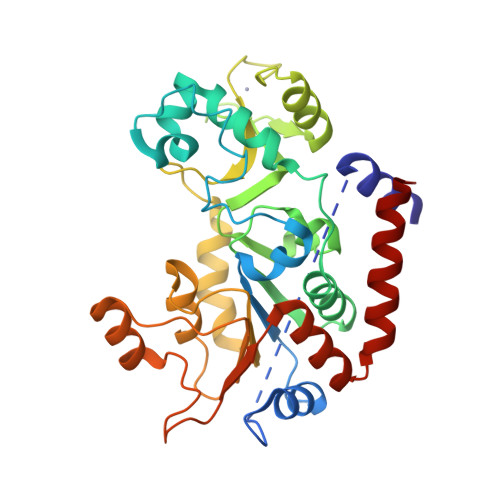
Top ▲

GtoPdb is requesting financial support from commercial users. Please see our sustainability page for more information.
Gene and Protein Information  |
||||||
| Species | TM | AA | Chromosomal Location | Gene Symbol | Gene Name | Reference |
| Human | - | 389 | 19q13.2 | SIRT2 | sirtuin 2 | |
| Mouse | - | 389 | 7 B1 | Sirt2 | sirtuin 2 | |
| Rat | - | 350 | 1q21 | Sirt2 | sirtuin 2 | |
Database Links  |
|
| Alphafold | Q8IXJ6 (Hs), Q8VDQ8 (Mm), Q5RJQ4 (Rn) |
| BRENDA | 3.5.1.- |
| CATH/Gene3D | 3.40.50.1220 |
| ChEMBL Target | CHEMBL4462 (Hs), CHEMBL3232691 (Mm), CHEMBL3232690 (Rn) |
| Ensembl Gene | ENSG00000068903 (Hs), ENSMUSG00000015149 (Mm), ENSRNOG00000020102 (Rn) |
| Entrez Gene | 22933 (Hs), 64383 (Mm), 361532 (Rn) |
| Human Protein Atlas | ENSG00000068903 (Hs) |
| KEGG Enzyme | 3.5.1.- |
| KEGG Gene | hsa:22933 (Hs), mmu:64383 (Mm), rno:361532 (Rn) |
| OMIM | 604480 (Hs) |
| Pharos | Q8IXJ6 (Hs) |
| RefSeq Nucleotide | NM_012237 (Hs), NM_022432 (Mm), NM_001008368 (Rn) |
| RefSeq Protein | NP_036369 (Hs), NP_071877 (Mm), NP_001008369 (Rn) |
| UniProtKB | Q8IXJ6 (Hs), Q8VDQ8 (Mm), Q5RJQ4 (Rn) |
| Wikipedia | SIRT2 (Hs) |
Selected 3D Structures  |
|||||||||||

|
|
||||||||||
Enzyme Reaction  |
||||
|
||||
Download all structure-activity data for this target as a CSV file 
| Inhibitors | |||||||||||||||||||||||||||||||||||||||||||||||||||||||||||||||||||||||||||||||||||||||||||||||||||||||||||||||||||
| Key to terms and symbols | View all chemical structures | Click column headers to sort | |||||||||||||||||||||||||||||||||||||||||||||||||||||||||||||||||||||||||||||||||||||||||||||||||||||||||||||||||
|
|||||||||||||||||||||||||||||||||||||||||||||||||||||||||||||||||||||||||||||||||||||||||||||||||||||||||||||||||||
| General Comments |
| SIRT2 is NAD+-dependent protein deacetylase, which deacetylates internal lysines on histone, α-tubulin and some transcription factors. SIRT2 is the most abundant sirtuin in the brain [7]. Selective pharmacological blockade of SIRT2 is being investigated for potential clinical benefit in neurodegenerative diseases (and cancers [5]), with initial research focussing on the synucleinopathy, Parkinson's disease [6]. |
1. Ai T, Wilson DJ, More SS, Xie J, Chen L. (2016) 5-((3-Amidobenzyl)oxy)nicotinamides as Sirtuin 2 Inhibitors. J Med Chem, 59 (7): 2928-41. [PMID:26982234]
2. Cui H, Kamal Z, Ai T, Xu Y, More SS, Wilson DJ, Chen L. (2014) Discovery of potent and selective sirtuin 2 (SIRT2) inhibitors using a fragment-based approach. J Med Chem, 57 (20): 8340-57. [PMID:25275824]
3. Disch JS, Evindar G, Chiu CH, Blum CA, Dai H, Jin L, Schuman E, Lind KE, Belyanskaya SL, Deng J et al.. (2013) Discovery of thieno[3,2-d]pyrimidine-6-carboxamides as potent inhibitors of SIRT1, SIRT2, and SIRT3. J Med Chem, 56 (9): 3666-79. [PMID:23570514]
4. Finnin MS, Donigian JR, Pavletich NP. (2001) Structure of the histone deacetylase SIRT2. Nat Struct Biol, 8 (7): 621-5. [PMID:11427894]
5. Hu J, Jing H, Lin H. (2014) Sirtuin inhibitors as anticancer agents. Future Med Chem, 6 (8): 945-66. [PMID:24962284]
6. Outeiro TF, Kontopoulos E, Altmann SM, Kufareva I, Strathearn KE, Amore AM, Volk CB, Maxwell MM, Rochet JC, McLean PJ et al.. (2007) Sirtuin 2 inhibitors rescue alpha-synuclein-mediated toxicity in models of Parkinson's disease. Science, 317 (5837): 516-9. [PMID:17588900]
7. Pandithage R, Lilischkis R, Harting K, Wolf A, Jedamzik B, Lüscher-Firzlaff J, Vervoorts J, Lasonder E, Kremmer E, Knöll B et al.. (2008) The regulation of SIRT2 function by cyclin-dependent kinases affects cell motility. J Cell Biol, 180 (5): 915-29. [PMID:18332217]
3.5.1.- Histone deacetylases (HDACs): sirtuin 2. Last modified on 14/07/2016. Accessed on 25/12/2025. IUPHAR/BPS Guide to PHARMACOLOGY, https://www.guidetopharmacology.org/GRAC/ObjectDisplayForward?objectId=2708.